Kamada Ekadashi in 2026 will be observed on Sunday, March 29, 2026 , marking a highly auspicious occasion dedicated to Bhagwan Vishnu, the supreme preserver and protector of the universe. This sacred day is revered for its ability to grant the fulfillment of desires, remove past karmic burdens, and accelerate spiritual progress. It is believed that those who observe this Ekadashi with unwavering devotion and sincerity are blessed with divine grace, which eradicates sins and paves the way for liberation. The spiritual essence of Kamada Ekadashi lies in its power to purify the heart and mind, helping devotees overcome worldly distractions and cultivate inner peace, prosperity, and righteousness. As per the ancient scriptures, observing this Ekadashi with faith and discipline ensures protection from negative influences, bestows blessings of happiness and success, and ultimately leads one toward moksha, the supreme liberation from the cycle of birth and death.
Festival Date, Time, Muhurat & Tithi
Kamada Ekadashi will be observed on Sunday, March 29, 2026
Ekadashi Tithi (11th lunar day) of the Chaitra month as per the lunar calendar.
Key Timings for Kamada Ekadashi 2026:
Kamada Ekadashi on Sunday, March 29, 2026
On 30 th Mar, Parana Time - 06:34 AM to 07:09 AM
On Parana Day Dwadashi End Moment - 07:09 AM
Ekadashi Tithi Begins - 08:45 AM on Mar 28, 2026
Ekadashi Tithi Ends - 07:46 AM on Mar 29, 2026
Note : Sunrise and sunset vary by region and date due to India's geographical diversity. For exact timings, refer to local astronomical data.
Significance & Importance of Kamada Ekadashi
Kamada Ekadashi holds profound significance symbolizing the opportunity for devotees to cleanse themselves of past sins, remove obstacles in their spiritual journey, and seek divine blessings for the fulfillment of their desires. The importance of Kamada Ekadashi is rooted in the belief that Bhagwan Vishnu, as the preserver of the universe, is the ultimate source of both material and spiritual blessings. It is said that by observing this auspicious day with true devotion, the devotee's wishes—whether worldly or spiritual—are fulfilled, and they are granted divine protection and guidance.
The significance of Kamada Ekadashi extends far beyond the mere act of fasting, as it is considered a powerful means to purify the soul and gain divine grace from Bhagwan Vishnu. The sacred observance of this Ekadashi is not only about material desires but also holds spiritual importance, offering liberation from the bondages of karma and worldly attachments. The Bhavisya Uttara Purana, an ancient Hindu text, highlights the extraordinary power of Kamada Ekadashi, explaining that fasting on this day holds a far greater merit than even the highest forms of charitable acts or sacrifices, such as the Ashvamedha Yajna (Horse Sacrifice), which was performed by kings to achieve unparalleled spiritual merit.
In this Purana, Bhagwan Krishna explains to Yudhisthira, the eldest of the Pandavas, the immense spiritual benefit that comes from observing Kamada Ekadashi. Bhagwan Krishna describes it as an act that surpasses all other religious deeds, including the donation of vast amounts of wealth or performing grand sacrifices, even in front of deities. He emphasizes that the devotee who sincerely observes the fast, adhering to its strict regulations—such as abstaining from grains, focusing on prayers, chanting Vishnu's names, and engaging in spiritual reflection—will be absolved of even the most heinous sins, no matter how severe. Through the grace of Bhagwan Vishnu, such a devotee is granted liberation from the cycle of birth and death, receiving a divine place in Vishnu’s eternal abode, Vaikuntha.
This proclamation underscores the idea that true spiritual victory is achieved not through external rituals but through sincere devotion and the purity of heart. By adhering to the rules of Kamada Ekadashi and observing the fast with complete dedication, the devotee undergoes a spiritual cleansing, shedding past negative karma and opening the soul to the divine grace of Bhagwan Vishnu. It is believed that the fast on this auspicious day eradicates all obstacles, heals the soul, and brings ultimate peace and prosperity. The observance of Kamada Ekadashi is, therefore, a transformative act—one that leads the devotee to the highest spiritual attainment, making it a day for deep inner reflection, devotion, and the realization of one’s most profound desires, both material and spiritual.
The spiritual importance of Kamada Ekadashi extends beyond the material world; it is seen as an opportunity to deepen one’s relationship with the divine and purify the soul for a higher state of consciousness. It is said that this Ekadashi is especially auspicious for those seeking relief from hardships, financial troubles, or emotional turmoil. The blessings gained from observing Kamada Ekadashi are believed to bring peace, prosperity, and clarity to the devotee’s life, while simultaneously advancing them on the path to spiritual victory.
The observance of this sacred day is a reminder that true success lies not in worldly achievements but in one's alignment with the divine will and the surrender of the ego. By dedicating oneself to Vishnu on Kamada Ekadashi, the devotee steps closer to realizing their highest spiritual potential and attaining eternal bliss.
Story of Kamada Ekadashi
The story of Kamada Ekadashi, as narrated by Bhagwan Sri Krishna to Yudhishtira in the Varaha Purana, illustrates the transformative power of devotion, fasting, and the grace of Bhagwan Vishnu. The tale unfolds in the magnificent kingdom of Bhogipura, a land where celestial beings such as Gandharvas, Apsaras, and Kinnaras lived in harmony. Among them was a Gandharva couple, Lalit and Lalita, who were deeply in love and inseparable in thought and spirit. Their bond was so profound that they constantly longed for each other’s presence, even in the midst of their artistic duties. Lalit, renowned for his mesmerizing singing, was once performing solo in the royal court of King Pundarika, where the Apsaras danced to his melodious voice. However, instead of focusing on his performance, his mind drifted toward his beloved Lalita, filling his heart with longing and distraction.
As Lalit sang, his preoccupation with his wife caused him to falter, missing beats and losing rhythm. This lapse was immediately noticed by a venomous and envious serpent named Kakot, who resided in the court. Seizing the opportunity to humiliate Lalit, Kakot pointed out the flaw in his performance, making sure the king’s attention was drawn to his lack of concentration. King Pundarika, feeling personally insulted by what he perceived as disrespect and negligence, was consumed by rage. Without hesitation, he pronounced a terrible curse upon Lalit, condemning him to transform into a horrific cannibal, a monstrous being with an enormous form, crimson eyes, flared nostrils, and a gaping mouth, doomed to wander the earth consumed by primal hunger, devouring raw meat and indulging in gruesome acts. No sooner had the curse been uttered than Lalit’s handsome form vanished, replaced by a terrifying creature whose very presence struck fear into all who beheld him.
Lalita, devastated beyond words, watched helplessly as her loving husband turned into a hideous beast. Her heart ached at the thought of a life without him, but she refused to abandon him. Driven by unwavering devotion and the hope of finding a cure, she wandered through forests, mountains, and desolate lands, following her cursed husband as he roamed aimlessly in his monstrous form. She endured his dreadful existence, witnessing his wild and deplorable acts, yet she remained steadfast in her resolve to find a way to restore him. Fortune smiled upon her one day when she ascended the Vindhyachal Hills, where she encountered the great Sage Shringi, a revered and enlightened seer. Overwhelmed with emotion, Lalita immediately bowed before the sage, tears streaming down her face, as she narrated the tragic tale of her husband’s fate.
Sage Shringi, moved by her deep love and devotion, listened attentively and then revealed to her a sacred remedy, a means by which she could break the curse and restore her husband’s original form. He advised her to observe the holy fast of Kamada Ekadashi, following its rituals and disciplines with utmost sincerity. By performing this sacred vrat and dedicating all its accumulated merits to her husband, she would invoke the divine grace of Bhagwan Vishnu, which alone had the power to reverse the curse. With renewed hope, Lalita wholeheartedly observed Kamada Ekadashi, abstaining from food, engaging in deep prayer, chanting Vishnu’s sacred names, and staying awake in devotion throughout the night.
On the auspicious morning of Dwadashi (the 12th lunar day), with unwavering faith, Lalita stood before the deity of Bhagwan Vasudeva and humbly offered her prayers. With tears of devotion, she pleaded with the Supreme Bhagwan to transfer all the spiritual merits she had earned through her fast to her husband, so that the terrible curse of King Pundarika would be lifted. Moved by her sincerity and unwavering faith, Bhagwan Vishnu accepted her request, and in an instant, a divine light enveloped Lalit, washing away the monstrous form that had enslaved him. As if awakening from a long nightmare, Lalit regained his original, radiant Gandharva form, standing once more as the charming celestial musician he once was. Overwhelmed with gratitude and joy, the reunited couple offered their deepest reverence to Bhagwan Vishnu, acknowledging that it was only through his divine mercy that they had been freed from their suffering.
With their love restored and their devotion rewarded, Lalit and Lalita ascended once more to the heavenly realms, where they lived in great joy, peace, and divine abundance. Their story became a testament to the power of Kamada Ekadashi, demonstrating that true devotion, unwavering faith, and sincere observance of sacred fasts can remove even the most dreadful curses, cleanse the soul of sins, and grant liberation from suffering. The observance of Kamada Ekadashi, as illustrated through this tale, is not merely about fasting but about the boundless grace of Bhagwan Vishnu, who listens to the sincere prayers of his devotees and grants them freedom, fulfillment, and ultimate spiritual elevation.
How to celebrate Kamada Ekadashi
On Kamada Ekadashi, devotees observe a day of fasting, prayer, and deep devotion to Bhagwan Vishnu. The day begins with a ritual bath to purify the body and mind, followed by the establishment of an altar with an image or idol of Vishnu. Devotees recite Vishnu’s sacred names, particularly the Vishnu Sahasranama or the Kamada Ekadashi mantra: “Om Vishnu, Om Vishnu, Om Vishnu, Kamada Ekadashi Svaha.” The fast is typically observed by abstaining from grains and food, with many devotees consuming only fruits, water, and milk. It is essential to remain in a state of heightened devotion, engaging in continuous prayer, chanting, and meditation throughout the day.
The fasting concludes with the Parana, which is the breaking of the fast at the specified time on the following day. The Parana is an important ritual that marks the end of the fast and includes offering prasad (holy offerings) to Vishnu and consuming it afterward. It is also a time for distributing prasad to others as a symbol of sharing divine blessings.
Acts of charity, such as feeding the poor, are also considered auspicious. The devotee reflects on their spiritual journey, seeks forgiveness for past sins, and prays for the fulfillment of desires and spiritual growth.
Observing Kamada Ekadashi with complete devotion is believed to bring divine blessings, prosperity, and ultimately the path to liberation.
Kamada Ekadashi Puja Vidhi (Puja Procedure)
The rituals (Puja Vidhi) of Kamada Ekadashi are prescribed in the ancient Vedic scriptures and are said to have been explained by Bhagwan Sri Krishna to Yudhishthira, the eldest of the Pandavas, in response to his inquiry regarding the significance of this sacred day. The observance follows a deeply spiritual and methodical approach to fasting and devotion, ensuring purification of both the body and soul.
On the Dashami Tithi (the tenth lunar day of Krishna Paksha, one day before Kamada Ekadashi), the devotee should cleanse their teeth thoroughly in the afternoon and partake in their final meal of the day at sunset. This preparation helps purify the body and signals the beginning of the Ekadashi fast.
On the morning of Kamada Ekadashi, the devotee must take a bath, preferably in a sacred river, which is considered the most purifying. If a river is unavailable, bathing in a lake or pond is recommended, and in the absence of natural water bodies, a bath with clean water at home suffices. While bathing, it is customary to apply sacred mud to the body while reciting a prayer to Mother Earth, invoking her divine presence for the removal of past sins.
The sacred invocation is as follows:
“O Asvakrante! O Rathakrante! O Vishnukrante! O Vasundhara! O Mrttike!”
This translates to:
'O Mother Earth! Please remove all my accumulated sins from past lives so that I may attain the divine abode of Bhagwan Vishnu, the Supreme Bhagwan.'
Following the purifying bath, Bhagwan Govinda (Vishnu) is worshiped with full devotion. An elaborate Bhog (offering of food) should be presented along with fragrant flowers and other sacred offerings. A lamp should be lit in honor of the Bhagwan, and throughout the day, devotees should engage in chanting, singing bhajans (devotional songs), and reciting sacred texts praising Bhagwan Vishnu.
The fast should be observed in a state of blissful devotion, with the devotee fully immersed in spiritual contemplation. Staying awake through the night is highly recommended, as Jagran (night-long vigil) pleases the Bhagwan immensely. Playing musical instruments and singing kirtans (hymns) through the night is considered an act of supreme devotion.
On the Dwadashi Tithi (the twelfth lunar day, the morning after Kamada Ekadashi), devotees should offer charity to Brahmanas (learned priests), seek forgiveness for any unintended offenses, and conclude the fast with utmost reverence. Those who maintain a complete fast until the following morning should recite the sacred prayer before breaking their fast:
“O Pundarikaksha, O lotus-eyed Bhagwan, now I will eat. Please shelter me.”
After reciting the prayer, the devotee should offer flowers and water at the lotus feet of Bhagwan Vishnu and to receive the full spiritual merit of the fast, devotees should drink the holy water that has been offered to the Bhagwan before consuming any food. For those who wish to undertake a deeper Vedic observance, a fire sacrifice (Havan/Yajna) can be performed as an additional spiritual offering.
Throughout the entire Ekadashi period, devotees should remain engaged in spiritual activities such as chanting, meditation, worship, and acts of charity, ensuring that their mind remains fixed upon Bhagwan Vishnu with unwavering devotion.
Kamada Ekadashi Puja Mantra
Kamada Ekadashi Main Puja Mantra
This mantra is recited during the main worship while offering flowers, incense, and prasad to Bhagwan Vishnu:
ॐ श्रीं ह्रीं क्लीं श्रीधराय नमः।
'Om Shreem Hreem Kleem Shreedharaya Namah'
Meaning: 'I bow to Bhagwan Vishnu, the Supreme Protector, who bestows prosperity, knowledge, and liberation.'
Kamada Ekadashi Vrat Vidhi (Fasting Procedure)
As per the specifications outlined in the ancient Hindu scriptures, the benefits of observing Ekadashi fasting can only be attained if the devotee adheres to the prescribed rules with sincerity and discipline.
- The observance of Kamada Ekadashi Vrat requires strict adherence to purity, devotion, and spiritual consciousness.
- The devotee should begin the day with a ritual bath on the morning of Kamada Ekadashi, ensuring physical and spiritual purification.
- Consumption of beans and grains is strictly prohibited on this day, as they are believed to interfere with the cleansing effects of the fast.
- Additionally, the killing of any animal is strictly forbidden, as Ekadashi is a day of ahimsa (non-violence) and sattvic living.
- The devotee must avoid sleeping during the day, both on Ekadashi and the following day (Dwadashi), as daytime sleep is believed to diminish the spiritual merit of the fast.
- Another important rule is to avoid the company of deceitful individuals, frauds, or those engaged in immoral activities. Scriptures state that if a devotee unknowingly comes into contact with such a person, purification should be performed by standing under the sun and gazing directly at it while offering prayers for purification.
- Additionally, abstinence from sexual activity is required on both Ekadashi and Dwadashi, ensuring that the devotee maintains a state of spiritual discipline and restraint.
- On Dwadashi (the day following Ekadashi), devotees should avoid eating at another person’s house, as well as consuming honey or urad dal (black lentils). It is prescribed to eat only one meal on Dwadashi, ensuring that the stomach remains light after the fast.
- Using bell-metal plates or utensils for eating should also be avoided, and devotees are advised not to apply oil to their body on this day.
- Ancient texts further specify that if a devotee has to engage in conversation with a person from a lower caste, self-purification should be performed by consuming Tulsi leaves or an Amalaki (Indian gooseberry) fruit.
- In the event that a devotee is unable to break the fast at the prescribed time on Dwadashi, they should drink at least a small amount of water to signify the completion of the fast and partake in food when it becomes convenient.
These rules ensure that the Ekadashi fast is observed with complete sincerity, thereby granting divine blessings, spiritual upliftment, and liberation from past sins through the grace of Bhagwan Vishnu.
Kamada Ekadashi Vrat Katha (Traditional Fasting Story)
Once in the ancient kingdom of Ratnapura, ruled by the just and noble King Chitraratha, lived a young and virtuous prince named Shobhana. He was married to a beautiful and devoted wife, Chandrabhaaga, the daughter of a devout Brahmana. She was well-versed in the significance of Ekadashi fasting and observed it with great discipline every month.
One day, Kamada Ekadashi arrived, and as per tradition, the entire kingdom observed the Ekadashi fast, refraining from food and remaining engaged in prayers and devotion to Bhagwan Vishnu. However, Prince Shobhana was physically weak, and Chandrabhaaga feared that fasting would be too difficult for him. Still, bound by royal custom and societal expectations, he decided to observe the fast despite his fragile condition. As the day passed, his body grew weaker, and by midnight, he succumbed to hunger and exhaustion, breathing his last.
Though devastated, Chandrabhaaga knew that Kamada Ekadashi was a day of divine merit. She performed the final rites with full devotion, trusting in Bhagwan Vishnu’s grace. Because Shobhana had observed the fast, even in his weakened state, the merits of Kamada Ekadashi granted him rebirth in a magnificent celestial kingdom, unseen by mortals, filled with divine riches, celestial maidens, and unparalleled splendor. However, since he had not completed the fast with full awareness, he could not fully enjoy his divine blessings.
Years later, Chandrabhaaga, while traveling on a pilgrimage, met a wandering sage who had the power to see celestial realms. He revealed to her that Shobhana now ruled over a divine kingdom but could not truly enjoy it because his Ekadashi fast had been incomplete. Moved by love, Chandrabhaaga decided to complete the Kamada Ekadashi fast with full devotion and offer all its merits to her husband. Bhagwan Vishnu, pleased by her selflessness and unwavering devotion, removed all obstacles, fully bestowing divine blessings upon Shobhana, allowing him to enjoy the celestial kingdom for eternity.
Puja Utensils, Essentials
Rudra Centre brings an extensive collection of Puja Articles which caters to all that is required for daily and special Puja Vidhis. We offer variants of designs and sizes in each category. The list includes handcrafted Puja Mandirs, Puja Pedestals, offering Bowls, Panchpatra, intricately carved Puja Thalis, Abhishek Vessels, in different materials, Pure Silver/German Silver articles like Kalash, set of Shodash Upachara and Several other Puja Articles, which we deliver at your doorstep.
Anant Vishnu Puja
The purpose of performing the Anant Vishnu Puja is to attain blessing of Bhagwan Anant Vishnu and to blessed by materialistic comforts, peace of mind and happiness. This divine form of Bhagwan Vishnu is also worshipped to regain lost wealth. The Vaishnavites, revere Him as the Supreme deity, one who has no beginning and no end.
The benefits of performing the Anant Vishnu puja is as follows:
- Offers divine blessings of Bhagwan Vishnu
- Offers divine blessings of Goddess Lakshmi
- Invites riches and prosperity
- Offers success and growth in all undertakings
- Helps to recover lost wealth
- Offers overall abundance
- Offers contentment and bliss
- Offers protection from negative energies and evil spirits
- Fills life with happiness
Rudra Centre Puja Services is the oldest and most trusted Online Puja Services provider in the world. Over 20 years we have organized Yagnas, Pujas, Homas and Kathas like Ati Rudra Mahayajna, Sahasra Chandi Homa, Akhand Ramayan Paath, Shiva Maha Puran Katha, 4 Prahar Mahashivratri Mahapuja with teams of 100’s of curated priests for the benefit of mankind and our global clientele.
All Ekadashi (Gyaras) Vrat Katha
Ekadashi is an auspicious day dedicated to Bhagwan Vishnu on the eleventh day of every lunar fortnight in traditional Hindu calendar. It occurs twice a month, once during Shukla Paksha and the other during Krishna Paksha. Fasting on Ekadashi is considered highly auspicious and is believed to help in redemption of sins and in attaining Moksha. Some devotees observe the fast without water and some with water and fruits depending upon ones preference.
Conclusion
Kamada Ekadashi is a sacred and spiritually uplifting occasion that offers devotees the opportunity for purification, liberation, and fulfillment of desires through the grace of Bhagwan Vishnu. It is more than just a day of fasting; it is a time for deep reflection, devotion, and surrender to the divine. Observing this Ekadashi with sincerity removes sins, eliminates past karmic burdens, and grants prosperity and spiritual progress. The stories associated with Kamada Ekadashi emphasize the power of unwavering faith, selfless devotion, and the transformative effects of fasting, demonstrating that even the most severe curses or obstacles can be overcome through Vishnu’s divine mercy.
By following the rituals, engaging in prayer, chanting sacred mantras, and practicing charity, devotees align themselves with the path of dharma and righteousness, ensuring blessings in both the material and spiritual realms. Those who observe this Ekadashi with full dedication are said to attain Vishnu’s eternal protection, peace, and ultimately, moksha (liberation). Thus, Kamada Ekadashi stands as a beacon of divine grace, guiding devotees towards inner purity, divine fulfillment, and eternal bliss in the abode of Bhagwan Vishnu.


-in-Astrology.jpg)

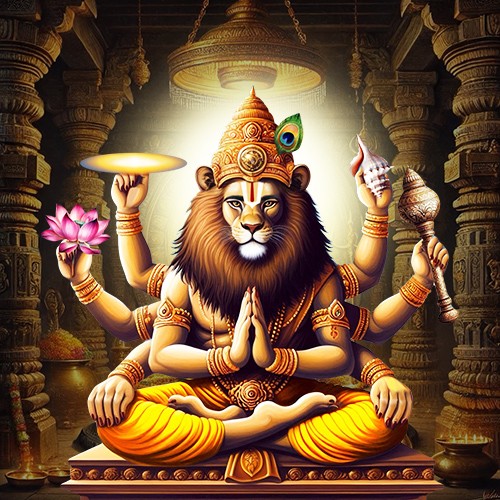
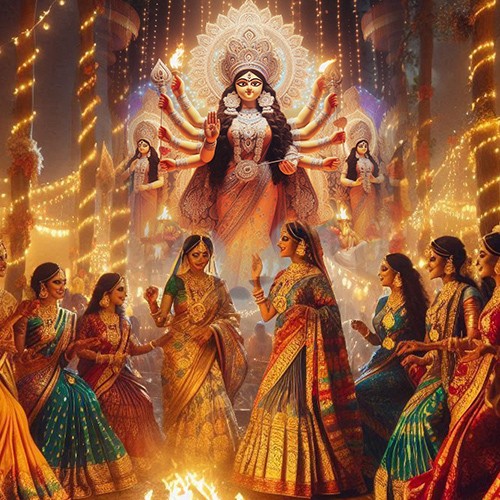
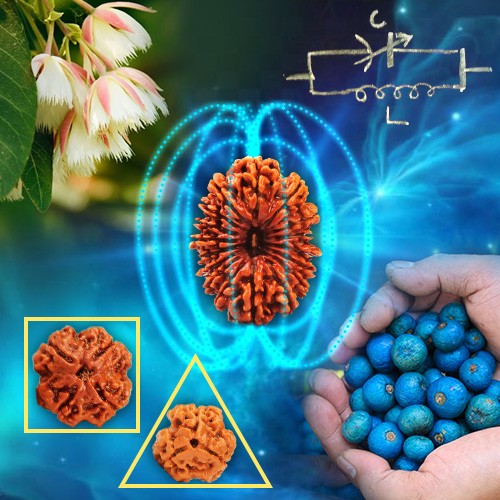


.jpg)
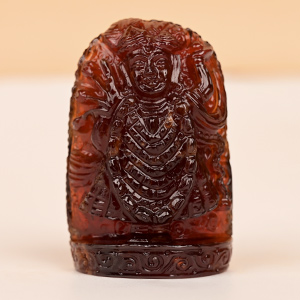
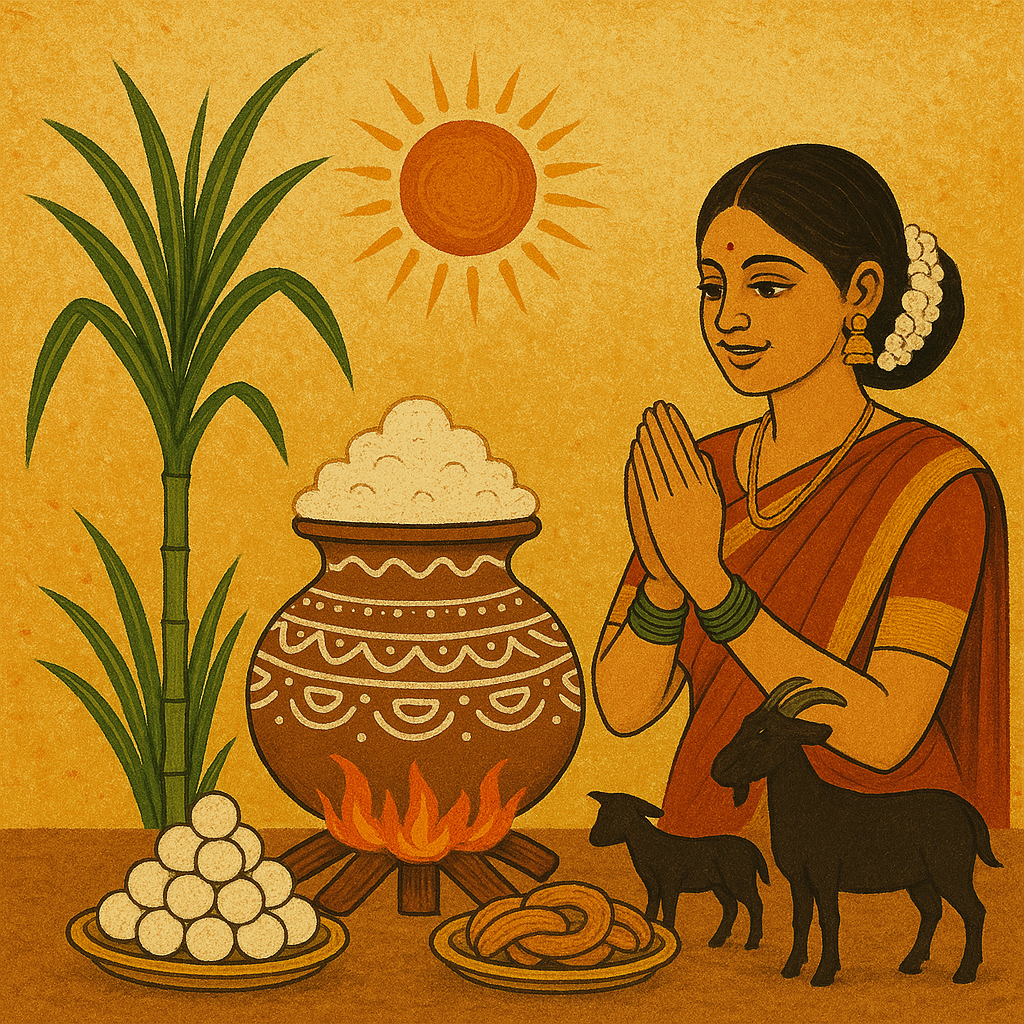
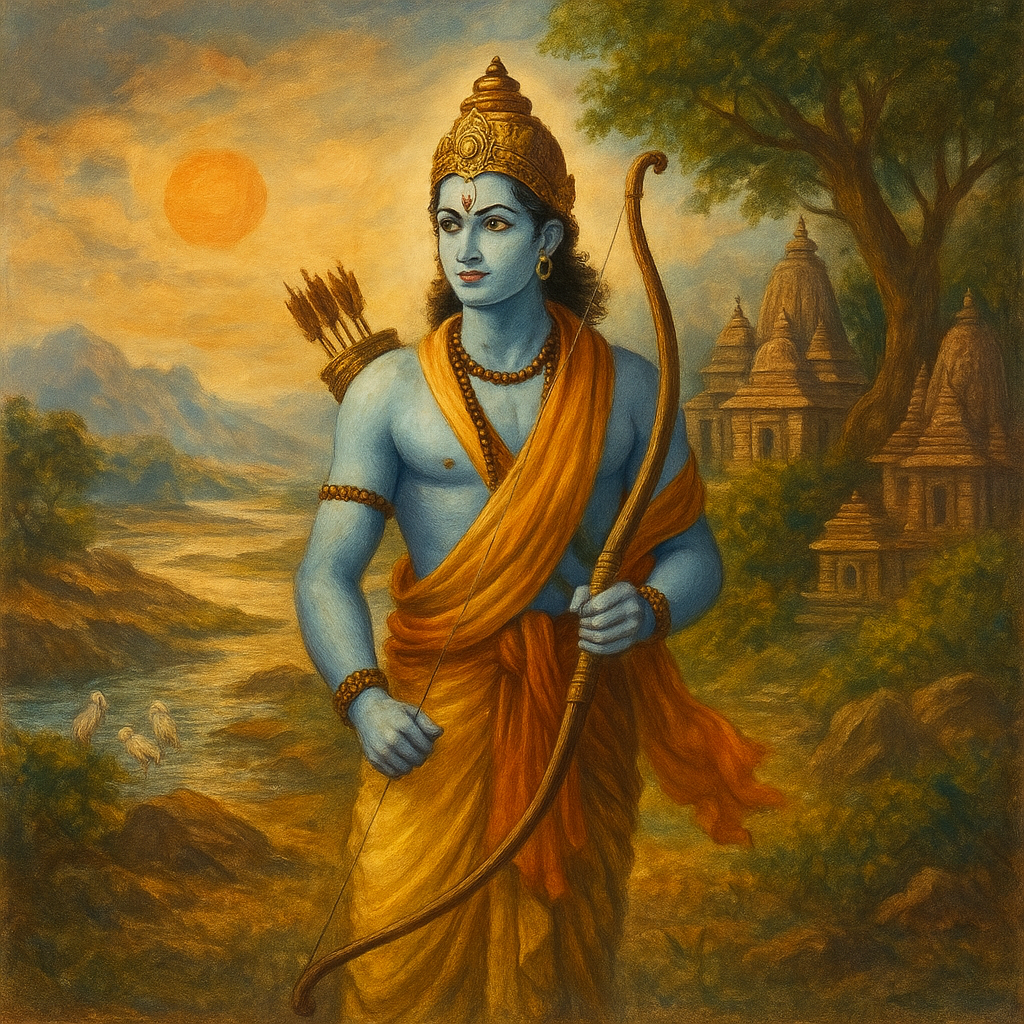
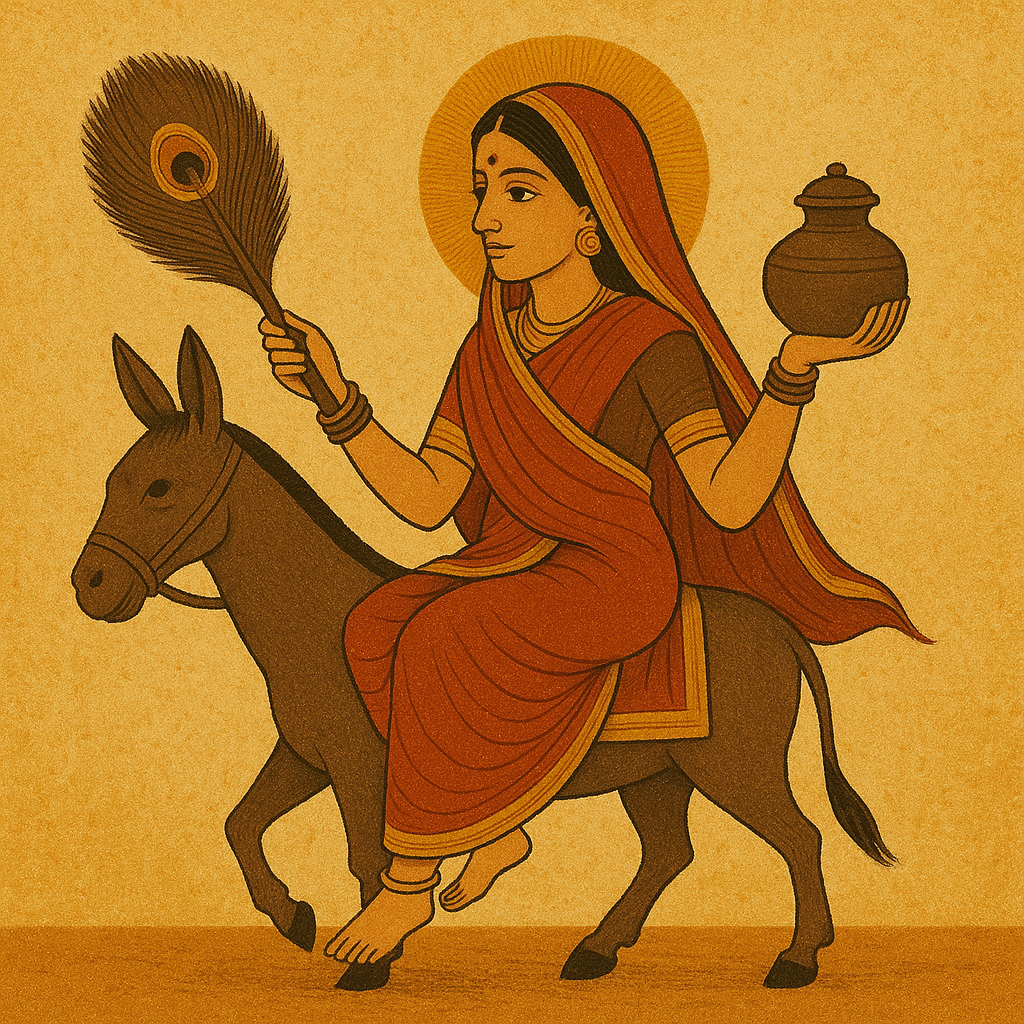
Comments 0
Leave your thought here